Trees Birds Mammals Fish Amphibians Reptiles
Wild Algarve
Bookshop
Orange-tip Butterfly - Anthocharis cardamines
Phylum: Arthropoda - Class: Insecta - Order: Lepidoptera - Family: Pieridae
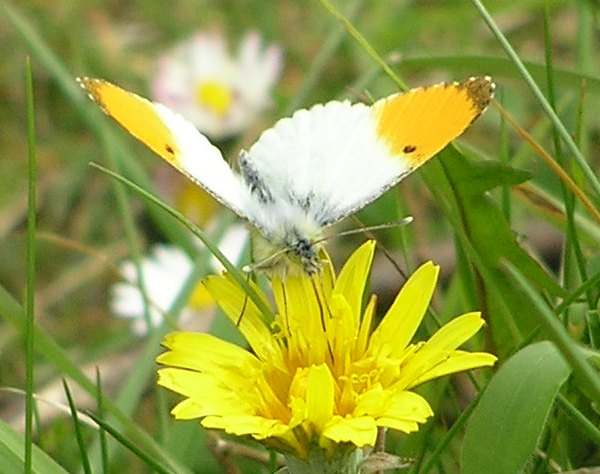
The male Orange-tip butterfly (above) is immediately recognisable by the distinctive orange sectors on the wing tips. The Provencal Orange-tip Anthocharis euphenoides is similar but the background colour of the male upperwings is a lovely deep yellow.
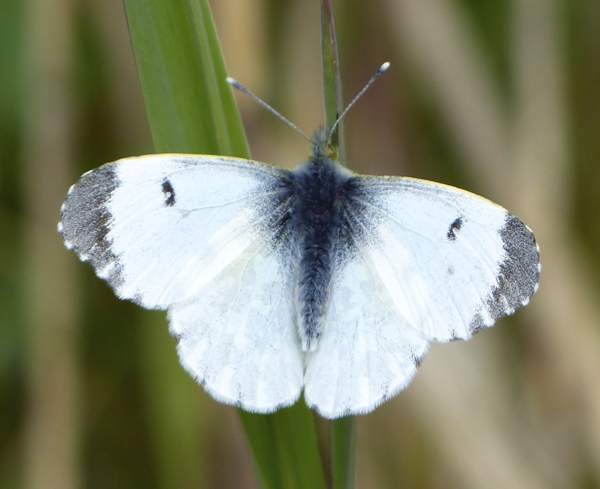
Females (above) lack the orange colouring and so from the top they might easily be confused with the Small White butterfly, Pieris rapae; however the greenish patterning on the underside of the hindwings of both male and female Orange-tip butterflies (see picture below) is an aid to identification.
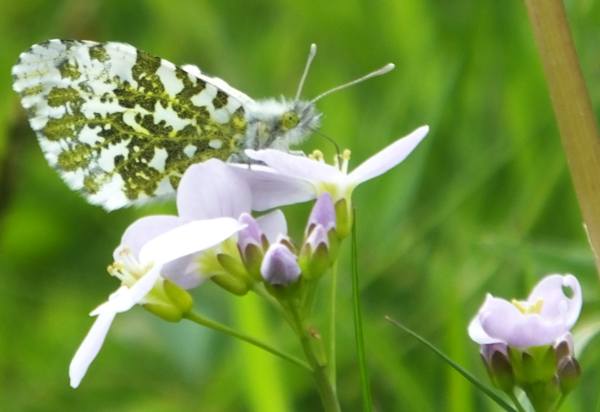
Distribution
Increasingly common in Britain and Ireland, these attractive, early-season butterflies occur throughout Europe and in most temperate parts of Asia. A similar, closely-related species can be seen in parts of the USA.
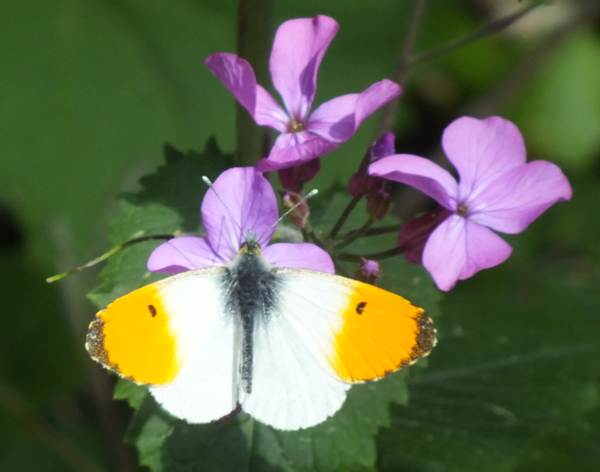
Male Orange-tip Butterfly on flowers of Honesty, southern France
Lifecycle
In Britain and Ireland the first Orange-tips usually emerge in mid April, but in very warm springs you might see them before the end of March, while a cold start to the year can delay their appearance by a week or two. By mid May there are usually plenty of males and females on the wing, but by early June the males and most of the females will have disappeared. In mainland European countries the flight season in mountainous regions can extend into July.
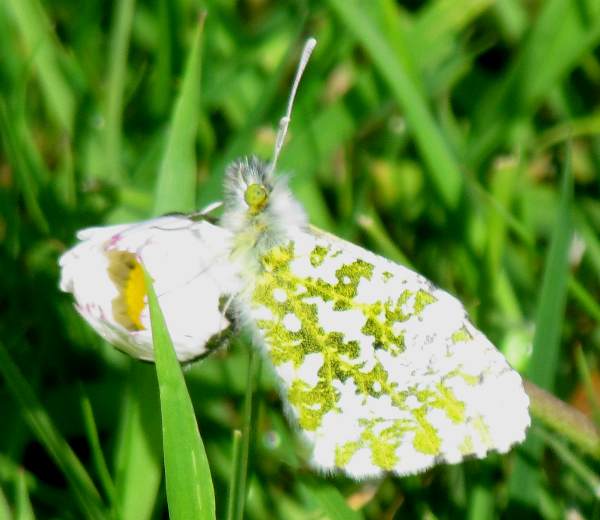
These meadow butterflies seek out Cardamine pratensis (commonly referred to as either Cuckooflower, Milkmaids or Lady's Smock, although they also have several other common names), Alliaria petiolata (Garlic Mustard - also known as Jack-by-the-Hedge) and other members of the Brassicaceae or cabbage family. Pale green eggs are laid singly, upon the flower stalks and usually just one egg per plant, and after a few days the eggs turn orange and then grey. (When more than one larva emerges on a plant it is not unusual for one to attack and consume any others.)
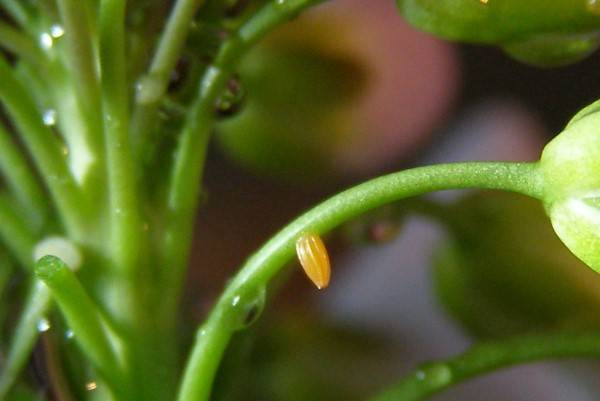
It takes just over a week for the eggs to hatch, and the caterpillars, initially orange but turning green as they mature, feed first on the flowers of their host plant and later on the flower stalks, seedpods and leaves. The mature caterpillars are distinguished by blue-green upper bodies and darker green underbodies delineated by a whitish lateral line.
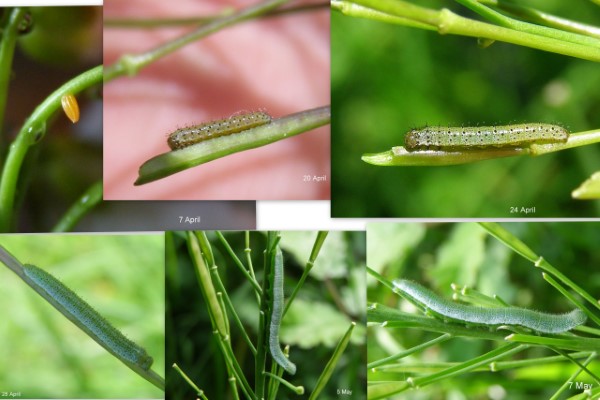
When ready to pupate, caterpillars that have been feeding on Cuckooflower attach themselves to a nearby woody stem, whereas those (often emerging a week or two later) on Garlic Mustard nearly always pupate on the stems of their larval foodplant.
Development stages
The following set of pictures shows stages in the development cycle from egg to winged adult.
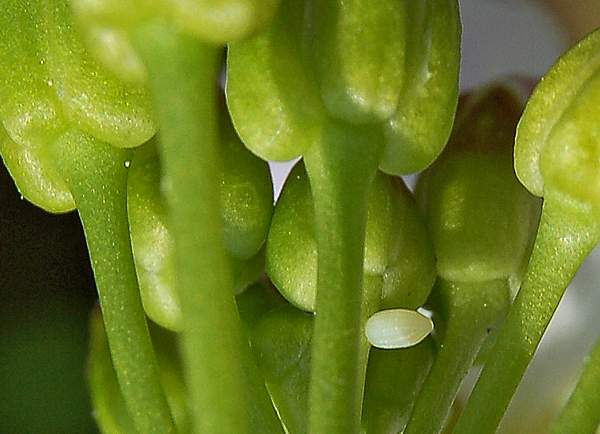
(i) The eggs are initially green, soon changing colour to...
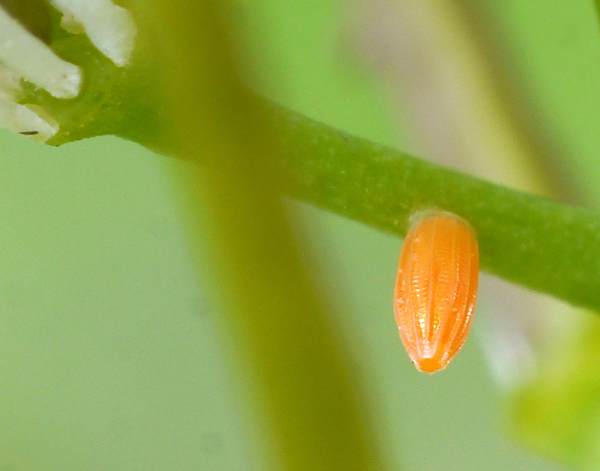
(ii). Orange, as seen above and in the next picture...
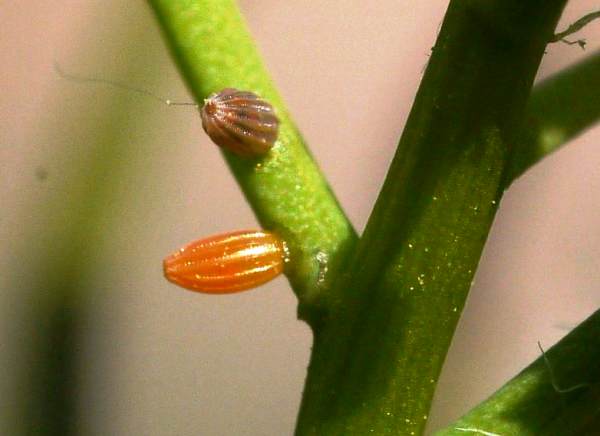
(iii). which shows two eggs on the same plant... a potential recipe for fratricide to follow
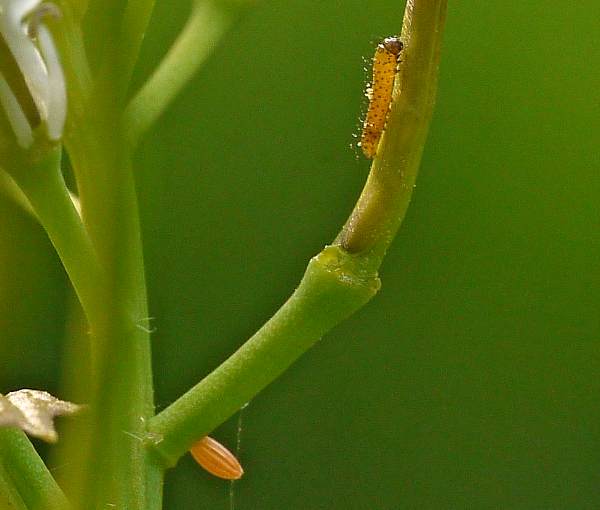
(iv). Here (above) is an egg and a first-instar larva.
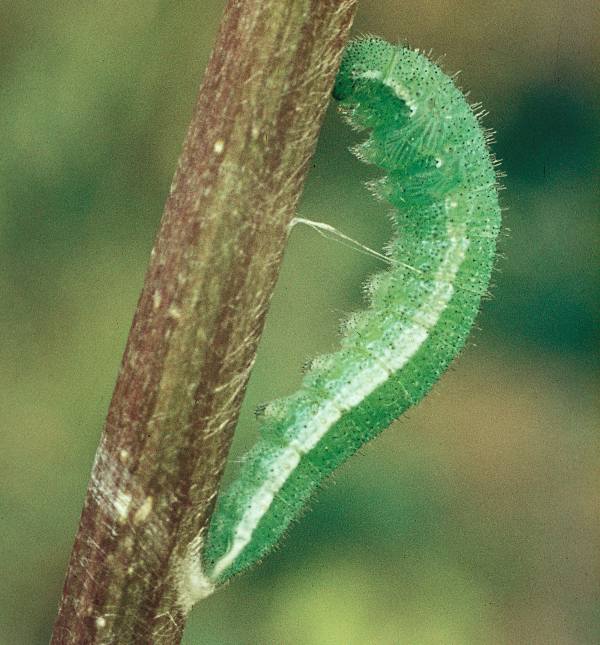
(v). Above: a pupating larva
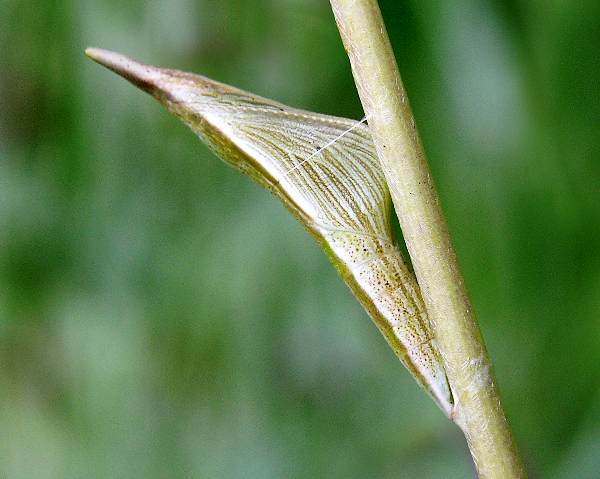
(vi). This picture (above) shows the appearance at the start of the pupal stage.
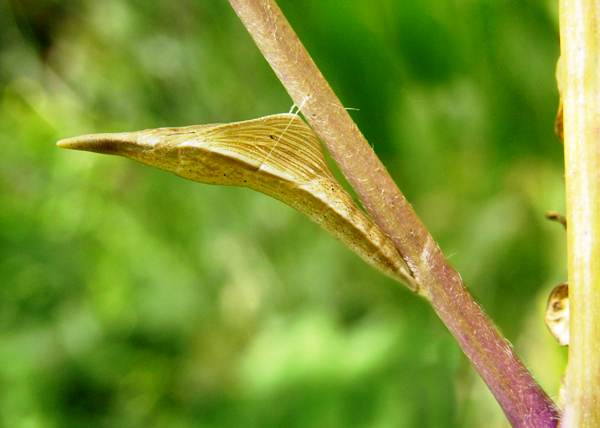
(vii). This picture (above) shows the appearance on day 6 after pupation.
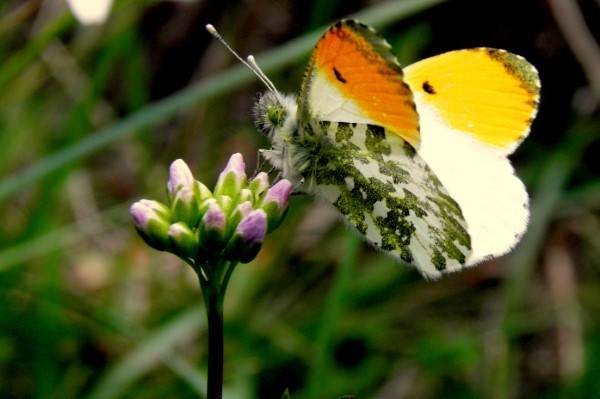
(viii) And finally the lovely adult (a male, of course, hence the wings have orange tips!).
Acknowledgements
This page includes pictures kindly contributed by Betty and Tony Rackham, Steve Jelf, and Marika Reinholds.
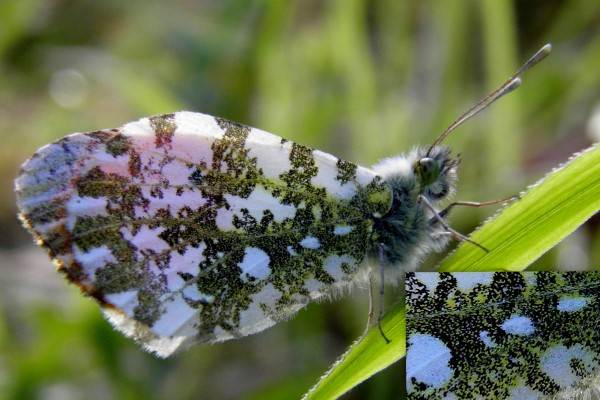
Studying butterflies and moths...
Excited at the prospect of flyfishing? So are we, and we're pretty sure you would find the Winding River Mystery trilogy of action-packed thrillers gripping reading too. Dead Drift, Dead Cert, and Dead End are Pat O'Reilly's latest river-and-flyfishing based novels, and now they are available in ebook format. Full details on our website here...
Buy each volume in ebook format for only £2.47 on Amazon... Paperbacks also available on Amazon at £6.95 each. All proceeds go towards keeping the First Nature website online.
Please Help Us: If you have found this information interesting and useful, please consider helping to keep First Nature online by making a small donation towards the web hosting and internet costs.
Any donations over and above the essential running costs will help support the conservation work of Plantlife, the Rivers Trust and charitable botanic gardens - as do author royalties and publisher proceeds from books by Pat and Sue.